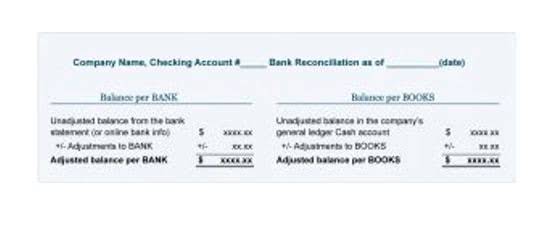
Auditors must navigate these complexities by leveraging their expertise, CPA training, and audit management technology to enhance the collection and analysis of audit evidence. The audit risk model Car Dealership Accounting is a framework auditors use to assess the risk of material misstatement in a company’s financial statements. The model has based on the premise that all audits involve some level of risk and that auditors must take steps to manage that risk.
Step 1: Assess Combined Risk (IR × CR)
Mastering audit risks in today’s fast-paced and complex financial environments requires a forward-thinking approach that embraces innovation such as audit management software. Auditors use cutting-edge tools and procedures to meticulously identify audit risks and maintain the accuracy of financial reporting. Through a comprehensive understanding of audit risks — including inherent, control, and detection risks — auditors are better equipped for audit engagements that ensure the retained earnings accuracy of financial statements. Delving deeper into audit risk assessment, it is important to understand how external factors, such as economic changes or new regulations, influence audit planning and risk evaluations. Auditors must stay informed about these developments to adjust their strategies as new risks emerge. For instance, the adoption of new accounting standards could necessitate updated audit techniques, leading to a reassessment of control mechanisms.
- These problems suggest that while the audit risk model provides a useful framework, auditors must apply it cautiously, supplementing it with professional judgment and a deeper analysis of the client’s specific risk environment.
- According to BMI, 36% of subjects were normal weight, 36% were overweight and 28% obese.
- This is especially likely when there are several misstatements that are individually immaterial, but which are material when aggregated.
- For example, if the risk of material misstatement is high, auditors need to reduce the level of detection risk.
- Given these risk levels, the auditor needs to plan his substantive audit tests to reduce the risk of not detecting material misstatements to 9%.
- An effective audit risk assessment is essential for ensuring the integrity and reliability of financial reports.
- The integration of risk assessments and strategic audit execution is essential for ensuring the reliability and integrity of financial reporting.
Supplementary Figure 1.
- It details how these risks are assessed and their relationship to the overall Audit Risk Formula, emphasizing the auditor’s responsibility in planning and executing audit procedures to mitigate these risks.
- Audit risk always exists regardless of how well auditors planned and performed their audit tasks.
- For example, suppose inherent risk for the jewelry store is assessed at 100% and control risk is assessed at 80%.
- Therefore, the auditor must assess each component and determine an appropriate level of audit procedures to reduce the risk to an acceptable level.
- For example, if the level of inherent and control risk is low, auditors can make an appropriate judgment that the level of audit risk can be still acceptably low even though the detection risk can be a bit high.
These are the most common types and refer to the likelihood that an organization’s internal controls fail to detect or prevent non-compliance. Inherent risk and control risk, deeply rooted in the entity’s operations and its surrounding environment, demand an auditor’s astute evaluation. These components require a thorough analysis at both the overarching financial statement level and the more granular assertion level.

Elevate your audits– A dedicated auditor’s dashboard
- The bank is not going to provide this type of information to the auditor, especially if they have not yet informed the company, and therefore this response will not generate any marks.
- After the risk assessment, the control risk score reaches 60% due to gaps in the execution and governance of controls.
- When RMM is low, auditors can set DR as high and still have a low overall audit risk.
- After blood clotting and centrifugation, serum was processed for analysis of biochemical markers of lipid and glucose metabolism.
- Additionally, the company’s recent expansion into new markets and diverse product portfolio may increase the inherent risk.
By using the audit risk model, auditors can plan and execute their audits effectively and ensure the reliability of financial statements. In conclusion, AIP can be considered a specific biomarker of fatty liver disease with high sensitivity for the diagnosis of severe liver steatosis. Considering AIP in the evaluation of patients with liver steatosis may augment the accuracy for diagnosing metabolic impairment and MASLD. Audits are an essential component of accounting, but they carry some element audit risk model of risk. The audit risk model helps assess this level of risk, making it a useful tool to employ during the planning stages of any financial audit.


On a gene transcriptional level, the scenario is orchestrated by the cholesterol-oxysterol sensor, nuclear receptor Liver X Receptor (LXR)30. Indeed, elevated cholesterol levels activate the LXR transcriptional pathway, leading to decreased cholesterol absorption and cellular uptake. Simultaneously, this pathway stimulates fatty and bile acid biosynthesis, promoting cholesterol excretion, and fecal disposal through HDL-triggered RCT. Indeed, TG circulating levels are determined by the balance between their production and clearance. These pathways are mainly controlled by PPARα35 and SREBP-1c36, whose expression is induced by insulin, which explains the classic ability of insulin to enhance the conversion of glucose to FAs37,38. In subjects with insulin-resistance, pancreatic insulin secretion is increased, both in the fasting and postprandial phases, since peripheral tissues require higher concentrations of insulin for glucose uptake39,40.

Furthermore, the technology sector is highly competitive and complex, thus putting a lot of pressure on the companies to present strong financial results. This formula shows that the overall level of audit risk is a product of the individual risk components. Therefore, the auditor must assess each component and determine an appropriate level of audit procedures to reduce the risk to an acceptable level. This is the risk of a material misstatement in the financial statements, regardless of any controls. It is influenced by factors such as the nature of the company’s business, the complexity of transactions, and financial reporting history. The auditor evaluates each component and determines appropriate audit procedures to mitigate overall risk.
- Renal, liver, inflammation thyroid function markers were as well studied following standardized biochemical procedures.
- Where the auditor’s assessment of inherent and control risk is high, the detection risk is set at a lower level to keep the audit risk at an acceptable level.
- More than 50% of the Fortune 500 leverage AuditBoard to move their businesses forward with greater clarity and agility.
- Quality Control Measures play a pivotal role in overseeing the audit’s progression, ensuring adherence to the highest standards of audit practice and compliance with regulatory requirements.
- Morning blood samples were obtained after 12 h of fasting from the antecubital veins.
- Your business can minimize risk by automating accounts with tools like three-way matching and bank reconciliation.
Vaia is a globally recognized educational technology company, offering a holistic learning platform designed for students of all ages and educational levels. We offer an extensive library of learning materials, including interactive flashcards, comprehensive textbook solutions, and detailed explanations. The cutting-edge technology and tools we provide help students create their own learning materials. StudySmarter’s content is not only expert-verified but also regularly updated to ensure accuracy and relevance.
What Is the Audit Risk Model?

Similar to inherent risk, auditors cannot influence control risk; hence, if the control risk is high, auditors may need to perform more substantive works, e.g. test on a bigger sample, to reduce the audit risk. When planning audit fieldwork, your audit team meets to brainstorm potential company- and industry-specific risks and outline specific areas of inquiry and high-risk accounts. Entities being audited sometimes feel fraud-related questions are probing and invasive, but interviews must be conducted for every audit.
